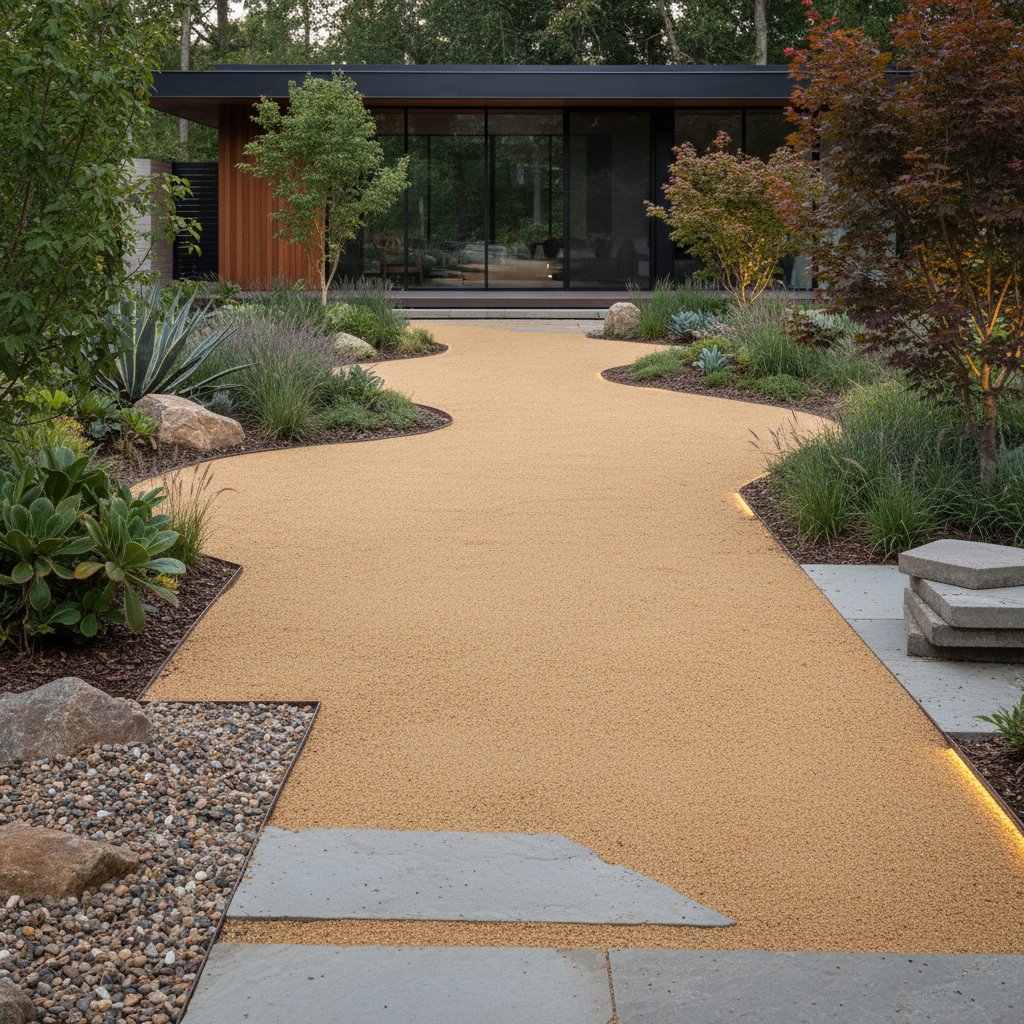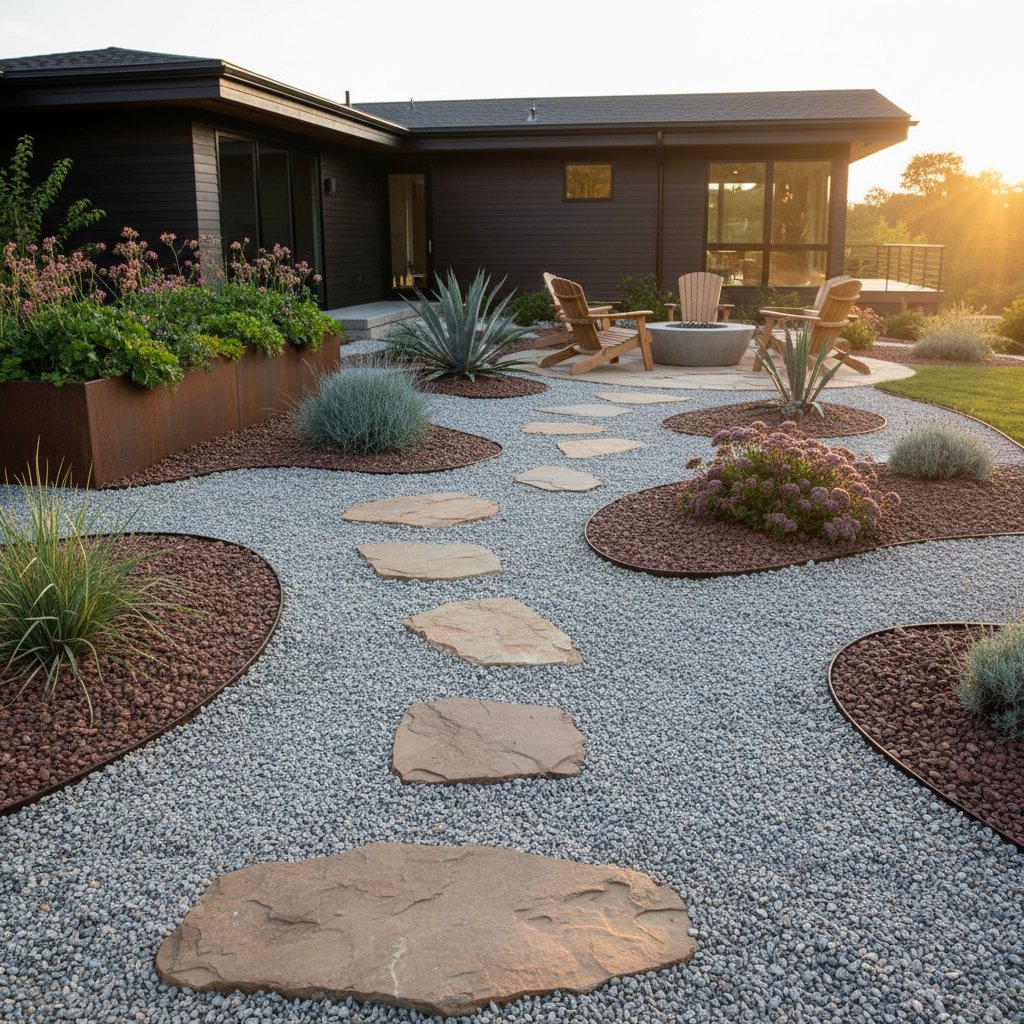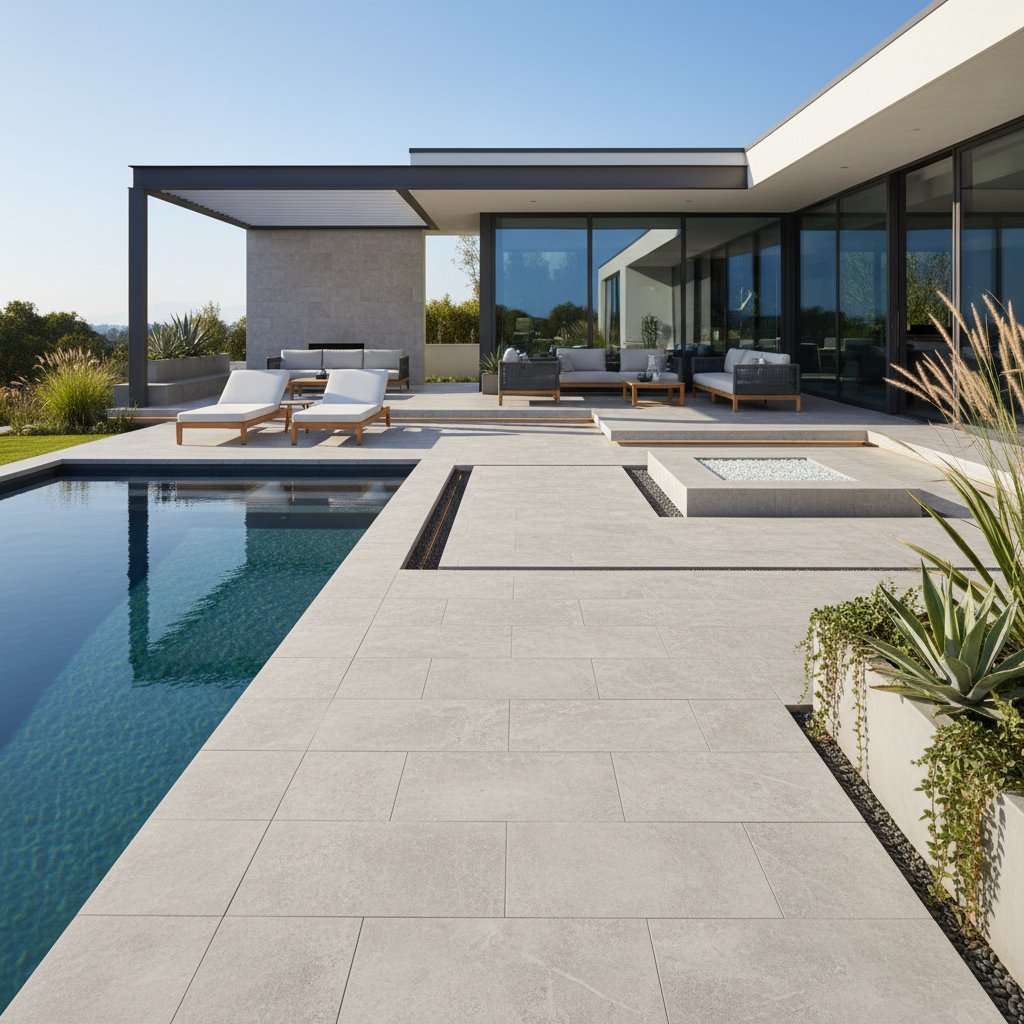Why Decomposed Granite Beats Gravel and Pavers
Decomposed granite offers a superior option for garden pathways in 2025. This natural material combines aesthetic appeal with practical benefits that surpass traditional choices like gravel and pavers. Homeowners seeking durable, eco-friendly surfaces find decomposed granite provides unmatched versatility and longevity.
Understanding Decomposed Granite
Decomposed granite forms from weathered granite rock, resulting in fine particles that bind together when compacted. Available in various colors, it mimics the look of natural stone paths found in landscapes worldwide. Unlike processed materials, decomposed granite maintains a rustic texture that integrates seamlessly with surrounding greenery.
This material excels in diverse settings, from urban courtyards to expansive backyard trails. Its composition allows water to percolate through, reducing runoff and supporting healthy soil conditions below the surface. Gardeners appreciate how decomposed granite enhances plantings without overwhelming them.
Key Advantages Over Gravel
Gravel serves as a common pathway choice, yet it presents challenges that decomposed granite avoids. Standard gravel consists of loose stones that shift underfoot, creating uneven surfaces over time. Foot traffic or weather events displace these stones, leading to frequent raking and replenishment.
Decomposed granite, by contrast, compacts into a firm, stable base. Stabilized versions incorporate binding agents to prevent erosion and maintain shape even in high-use areas. This stability minimizes maintenance efforts, allowing more time for enjoying the garden rather than tending to paths.
Cost considerations further favor decomposed granite. Gravel requires ongoing purchases to replace lost material, while decomposed granite installations last years with minimal additions. The initial investment yields long-term savings and a polished appearance that gravel struggles to achieve.
Superiority to Pavers
Pavers provide a structured alternative, but their rigidity comes at a price. Concrete or brick pavers demand precise excavation and leveling during installation, often requiring professional labor. Once set, they resist changes, making adjustments to garden layouts difficult and costly.
Decomposed granite offers flexibility that pavers lack. It conforms to subtle contours in the terrain, creating organic curves that enhance landscape flow. Removal or reconfiguration proves straightforward, ideal for evolving outdoor spaces.
Aesthetic drawbacks plague pavers in natural settings. Their uniform shapes can appear stark against soft plant borders, whereas decomposed granite blends harmoniously. Permeability sets it apart further; pavers often trap water, fostering weeds in joints, while decomposed granite allows drainage that discourages such growth.
Installation Process for Decomposed Granite Paths
Creating a decomposed granite pathway begins with site preparation. Mark the desired route and excavate to a depth of four to six inches, removing grass and roots to ensure a clean base. Compact the soil firmly to prevent settling.
Add a two-inch layer of crushed stone as a sub-base for drainage and stability. Spread three to four inches of decomposed granite evenly over this foundation. Use a plate compactor to pack the material tightly, achieving a smooth, walkable surface.
For enhanced durability, apply a stabilizer during the final layer. Water the path lightly to activate binding, then compact once more. Edge the borders with metal or wood to contain the material and define the path's shape.
- Measure and outline the path width, typically three to four feet for comfortable passage.
- Dig and level the trench, sloping slightly for water runoff.
- Install landscape fabric to suppress weeds beneath the surface.
- Layer and compact in stages to build density.
- Sweep additional decomposed granite into any voids after initial settling.
This process suits weekend warriors, completing most projects in a day or two.
Maintenance and Longevity
Decomposed granite paths demand little upkeep compared to alternatives. Sweep debris periodically to preserve appearance, and rinse with a hose to remove dirt. In rainy climates, inspect for erosion and add fresh material as needed, usually annually in high-traffic zones.
Avoid heavy machinery on the surface to prevent deep ruts. Rejuvenate faded areas by top-dressing with matching decomposed granite and compacting lightly. This approach extends the path's life beyond a decade, outlasting gravel's constant shifting and pavers' potential cracking.
Sustainability plays a key role in its appeal. Sourced locally in many regions, decomposed granite reduces transportation emissions. Its permeable nature supports groundwater recharge, aligning with water conservation efforts in drought-prone areas.
Enhancing Your Landscape with Decomposed Granite
Incorporate decomposed granite into patios, stepping stones, or ground cover around trees for a cohesive design. Pair it with native plants to amplify ecological benefits, attracting pollinators without chemical interventions. This material elevates everyday outdoor areas into inviting retreats.
Homeowners report greater satisfaction with decomposed granite due to its tactile warmth and visual softness. It withstands freeze-thaw cycles better than gravel and adapts to paver-like formality without the expense. For 2025 landscapes, decomposed granite stands as the practical, beautiful choice that connects homes to nature enduringly.



